Everest Trekking in winter
Nepal stands as an unparalleled emblem of adventure, drawing thrill-seekers from around the globe. Renowned for its majestic Himalayan ranges, this nation offers an array of heart-pounding activities, with trekking being the crown jewel. Embarking on a journey through Nepal's trails isn't just a walk; it's an enthralling venture, a story waiting to be written with each step.
The Everest Region, in particular, emerges as the epitome of this trekking narrative. Everest Trekking, as curated by Luxury Holidays Nepal, promises not just a trek but a transformative experience. To traverse the Everest Region is to immerse oneself in the vastness of the Himalayas, to confront and embrace its challenges, and to bask in the breathtaking beauty that this region generously offers. It's not merely a trek; it's a lifetime's memory carved in the annals of the grand Himalayas.
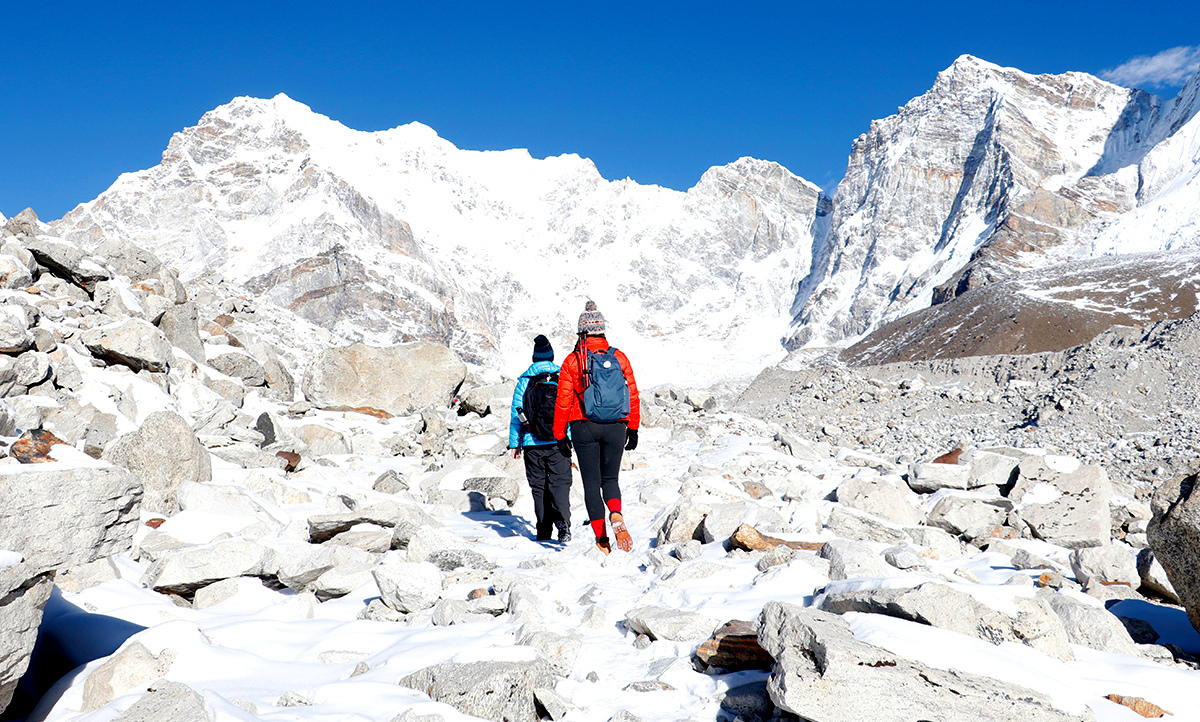
Everest Trekking in Nepal stands as one of the paramount challenges an adventurer can undertake. Yet, beyond its rigorous terrain and taxing ascents, this journey unfurls moments of sheer wonder. It's not merely about navigating snow-clad trails or braving slippery paths; it's a voyage into Nepal's rich tapestry of culture and tradition.
Each step on the Everest Trek reveals a blend of nature's splendor and the deep-rooted cultural heritage of the region. You traverse through quaint Sherpa villages, bearing witness to their unique customs, beliefs, and practices. High-altitude monasteries echo the spiritual fervor of the Sherpas, while Mani walls, carved stones bearing holy mantras, and fluttering prayer flags add to the trek's spiritual aura. The journey is punctuated with the emerald expanse of oak, rhododendron, and pine forests, and the challenging yet awe-inspiring views of the Dudh Koshi river and its captivating gorges.
The true reward, however, is the breathtaking panorama of the towering peaks of the Khumbu Region. As trekkers make their way, a visual feast unfolds with peaks like Mt. Everest, Lhotse, Nuptse, Cho Oyu, Makalu, and Lobuche majestically lining the horizon. Each peak, standing tall and proud, promises a sight to cherish, making every challenge faced on the trek worth the effort.
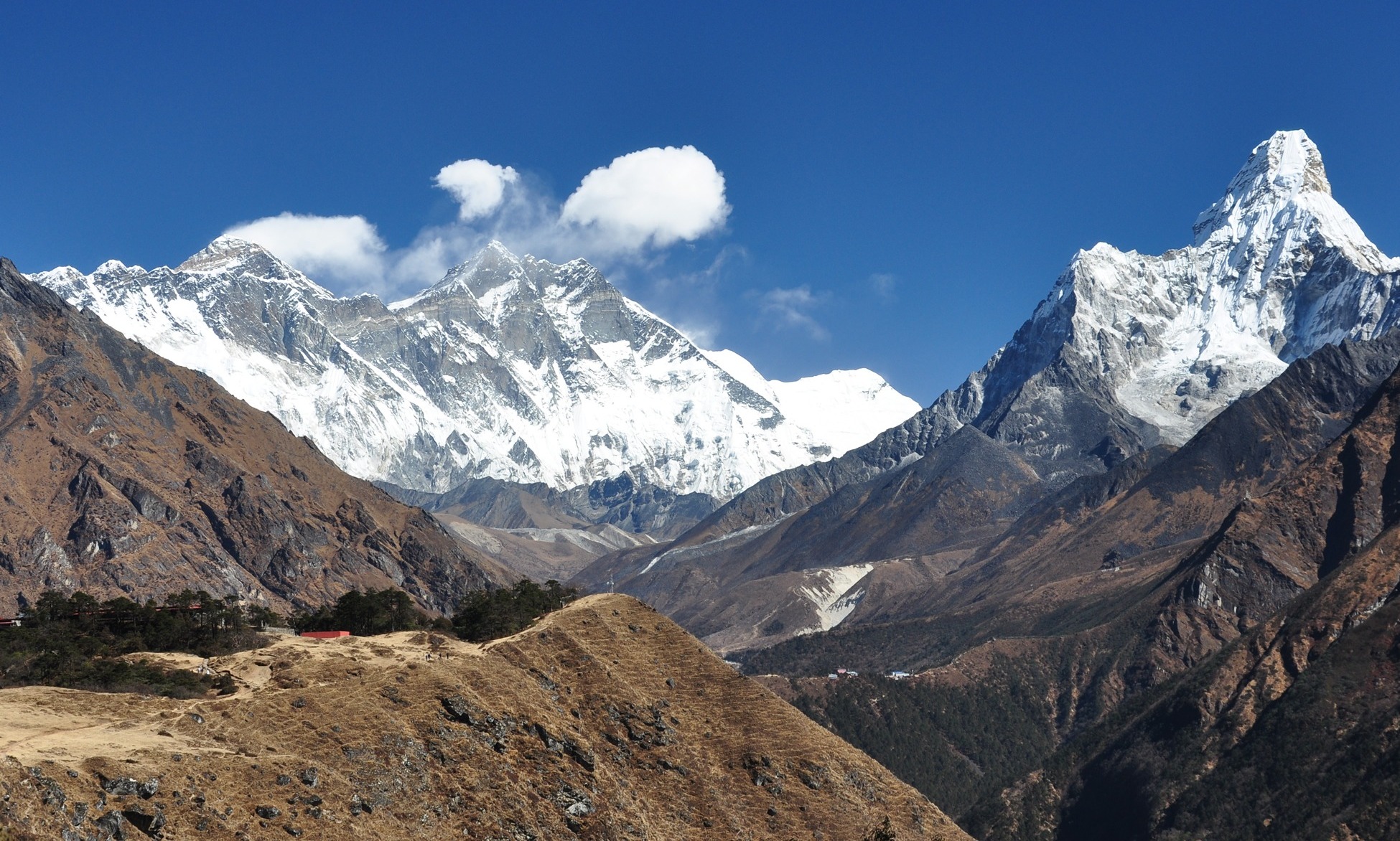
Now Comes to Point! Let’s talk about the best time for Everest Trekking!
Most of the inquirer's quire which is the best season for Everest trekking or the best time for Everest Basecamp Trek. They want to know whether Everest trekking or Everest Base Camp Trekking in winter is good or bad.
In the beginning, let you remember that Nepal has 6 seasons, unlike the 4 seasons in the West. The scenario of Nepalese weather and climates is opposite to Australia. Seasons in Nepal are as follows:
| Nepali Season | Season and Months |
| Basanta Ritu | Spring; Mid March to Mid May |
| Grishma Ritu | Early Summer: May to mid-July |
| Barkha Ritu | Summer Monsoon season; Mid-July to Mid-September |
| Sharad Ritu | Early Autumn Mid-September to Mid-November |
| Hemanta Ritu | Late Autumn; Mid-November to Mid-January |
| Shishir Ritu | Winter; Mid January to Mid March |
For either trekking in Nepal or Nepal Tours, spring and autumn are the best seasons in Nepal. These seasons are so pleasant and the weather is most of the time clear so these are the best season for trekking in Nepal and touring in Nepal.
Trekking in Nepal in winter
Winter trekking in Nepal, especially in the high-altitude Himalayan Region, presents formidable challenges that often deter even seasoned trekkers. This season blankets the region with heavy snowfall, fog, and clouds, often obscuring visibility and painting a hauntingly beautiful yet daunting landscape. The intense cold, coupled with biting winds, renders life in the mountains particularly arduous. It's a testament to these challenges that even the local Himalayan inhabitants often migrate to lower elevations during winter, guiding their yaks, sheep, and the renowned Changra (Nepalese Pashmina Goat) to more temperate zones.
From as low as 3000m, the terrains are carpeted in snow during winter, earning the season its reputation as an "off-season" or "reserve period" for trekking. The lack of trekkers venturing to higher altitudes during this time is indicative of the extremities of the season. When considering the Everest region or Khumbu region during winter, snow greets trekkers right from the start of Namche Bazaar. This means challenges commence early on, with treacherous paths rendered slippery by frequent snowfalls. The snow's depth, often reaching up to one's knees, combined with frozen lakes, streams, and creeks, heightens the trek's difficulty. Additionally, the majestic views, which are a prime allure of Everest trekking, remain cloaked behind impenetrable fog and clouds.
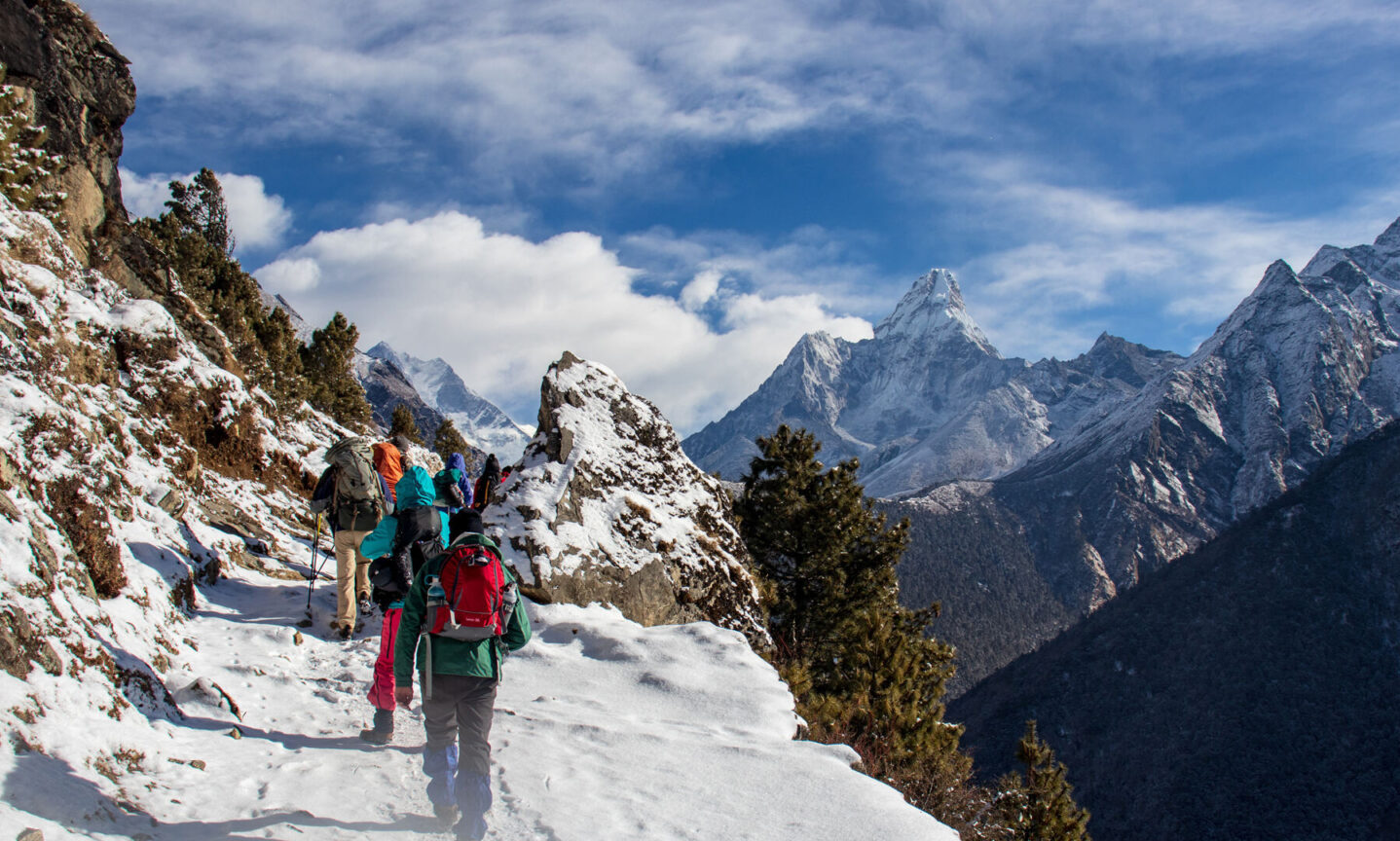
Given these stark realities, it's clear why Everest trekking in winter is often seen as a Herculean task, bordering on the impossible. For those with an indomitable spirit, these challenges can present an adventure of a lifetime, demanding utmost preparation and respect for the mountain's might.
Is there any way of reaching the Everest Base Camp in winter?
Even in the face of challenges, there's always a path to realize your dreams. If Everest trekking in winter presents insurmountable challenges, why not explore alternative avenues to witness the grandeur of the Everest region or reach Everest Base Camp? Enter the Everest Helicopter tour and the Everest Mountain Flight.
Opting for the Everest Helicopter tour offers a direct journey to Kalapatther, the pinnacle elevation of the Everest Base Camp Trek. From this vantage point, one is treated to mesmerizing mountain vistas and panoramic views that encapsulate the essence of the Himalayas. On the other hand, the Everest Mountain Flight propels you through the Himalayan skies, offering unparalleled aerial views of the Everest region's majestic peaks and the rich tapestry of landscapes painted in vivid hues.
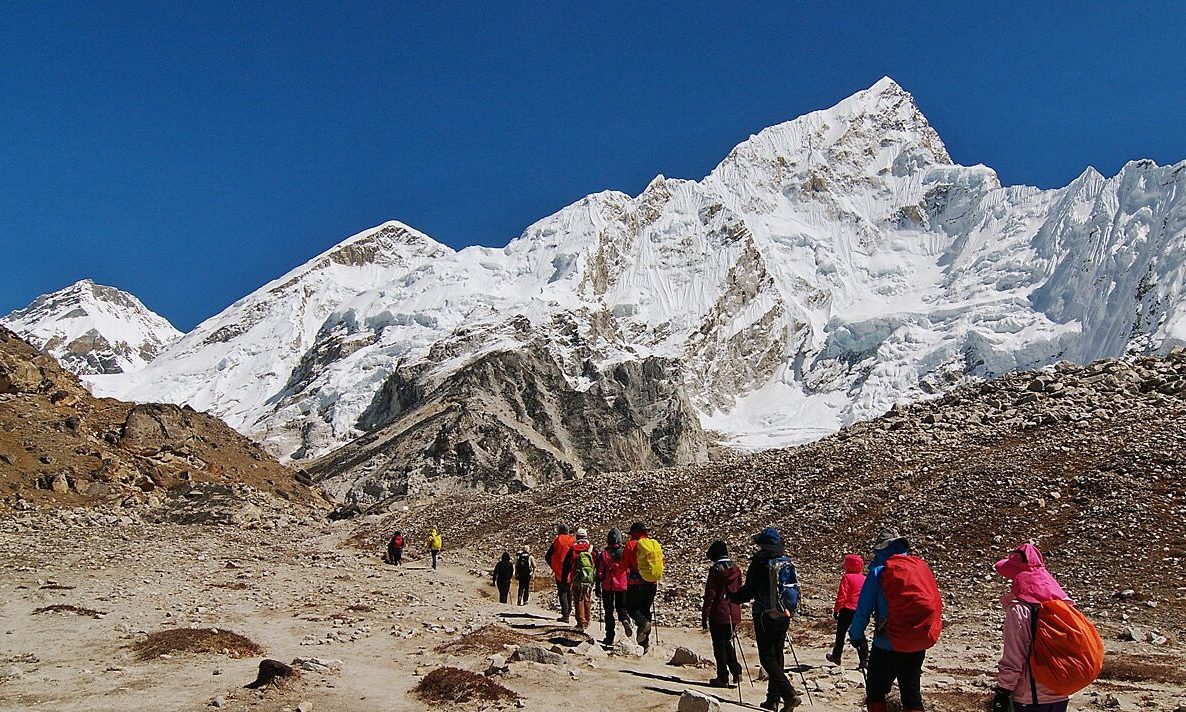
While trekking might pose challenges in winter, these alternative experiences ensure that the allure of Everest remains accessible, providing unforgettable memories without the treks' potential hardships.
Is there anything possible to trek in Nepal in winter other than Everest Trekking?
It’s a widely acknowledged fact that Everest Trekking in winter is technically and practically a daunting task. Much like other revered trekking regions in Nepal - such as Annapurna Trekking, Manaslu Trekking, and Langtang Trekking - winter treks are fraught with severe cold, continuous snowfalls, and obscured visibility due to fog and clouds, making the journey exceptionally risky and strenuous. Despite these hardships, for the dedicated trekking enthusiast, there is a glimmer of hope and alternate pathways to explore the Himalayan grandeur in winter.
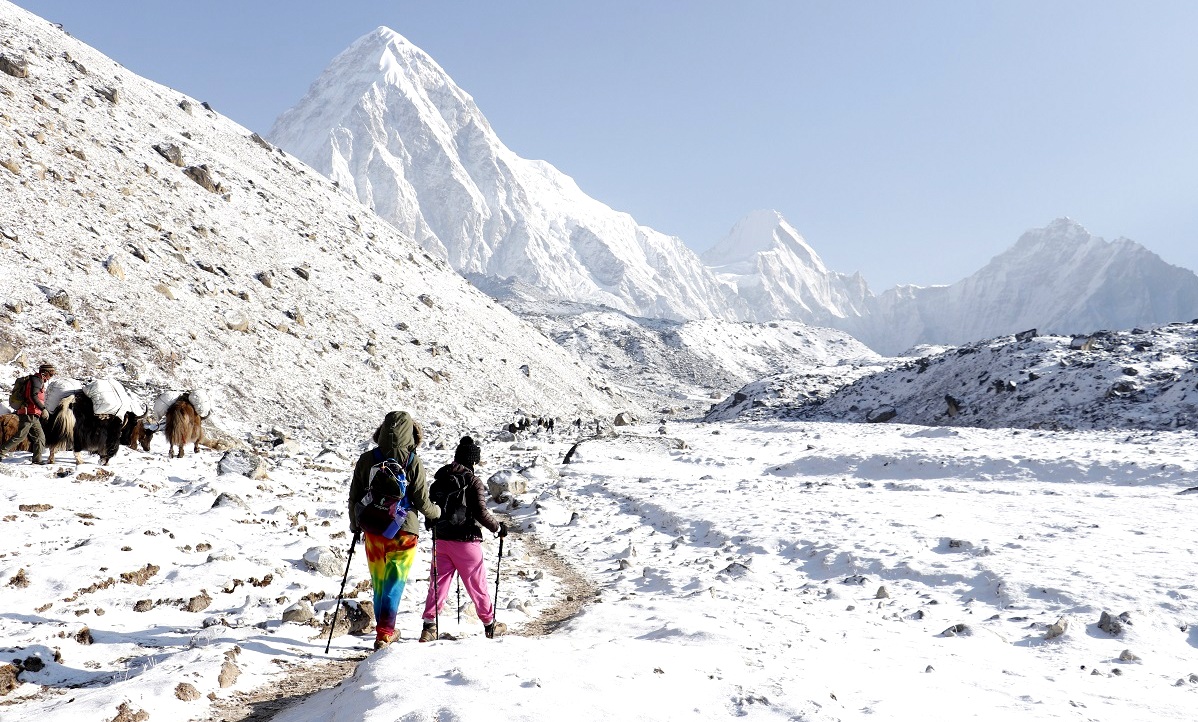
Luxury Holidays Nepal, a distinguished trekking company in Nepal, offers a range of short treks perfect for the winter season. Some shorter trekking routes, with lower elevations compared to the Annapurna or Everest regions, remain accessible even in the chilly winters. Popular options like Ghorepani Poonhill Trek, Dhampus Sarangkot Trek, and Luxury Classical Ghandruk Majgaon Trek stand out as ideal winter trekking destinations. These expeditions promise an unforgettable trekking experience, providing warmth, comfort, and breathtaking views, defying the winter season’s usual limitations.
While high-altitude trekking like Everest Trekking may be off the table in winter, these alternative treks provide the perfect solution, ensuring that the adventurous spirit finds its path amidst the snow-clad beauty of Nepal. Moreover, for those still yearning to behold the magnificence of Mount Everest and the Mahalangur Himal range during winter, the Everest Helicopter Tour and Everest Mountain Flight remain open avenues, guaranteeing awe-inspiring views and unforgettable experiences amidst the Himalayas' serene splendor.
For more options of tours and treks in Nepal please, click here.
If you need any further information, please contact us, Email: at [email protected], Phone: +977- 985 100 5129 (WhatsApp)
#Tags
Tripadvisor
5.0928 reviewsGoogle
4.8114 reviewsFacebook
4.1 recommend44 ReviewsTrustpilot
4.1 Great(5 reviews)- Trusted by50K plus traveller




